
Fuga: Melodies of Steel Review
When CyberConnect2 released Tail Concerto back in 1998 on the original PlayStation, it was their first project as a game studio – and the company has continued to return to that world throughout their history. 2010’s Solatorobo: Red the Hunter finally continued the company’s work in that world, now called Little Tail Bronx, but much like its predecessor – it failed to capture a particularly large audience, and once again the company was left unable to find a publisher for another entry in the loosely-tied series.
2021 marks CyberConnect2’s 25th anniversary as a company, and as part of their efforts to expand, Little Tail Bronx has been reborn with Fuga: Melodies of Steel – the company’s preliminary title celebrating their milestone, as well as their first fully self-published game. It’s fitting, that the same series that started it all is being tasked with helping the developer steady their first step on a new path, as an indie. Even before I’d booted up the game, and forgetting my own love for Solatorobo and Little Tail Bronx, I wanted Fuga to floor me and to be a success. All it takes is a glance to know that the game is a passion project for the studio.
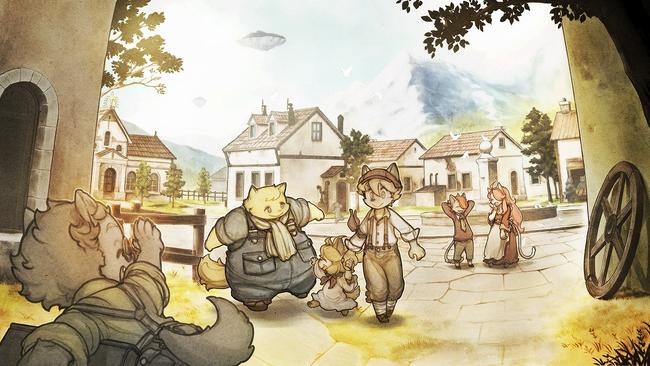
Unlike the two prior entries in the series to hit consoles, Fuga is a turn-based Strategy RPG. Players control a party of 12 children, piloting the giant tank Taranis on a conquest to rescue their parents, who have been captured by the invading Berman army. In each chapter you’ll start off on a route, with sections denoting item pickups, health and SP restoration crates, and events like Intermission points, battles, elite battles, and ruins. Every so often the route will branch, and you’re afforded the option of choosing which path to take. The game will helpfully let you know which of the routes is the more dangerous, and you’ll have to weigh whether you’re fine with challenging yourself for the sake of additional materials that can later be used to upgrade your tank, or to tackle less of a challenge and not risk any unnecessary damage.
Battles are where Fuga shines the brightest. The Taranis is equipped with 4 means of attack, but at any given time only 3 are generally available. Strikingly, each of these 3 guns will change according to the child manning them, and the additional effects will depend on whichever child is paired up with them as support. There are 3 distinct categories of guns – Machine Guns, Grenade Launchers, and Cannons. Cannons are stronger than Grenade Launchers, and Grenade Launchers stronger than Machine Guns – but the weaker the weapon, the higher the accuracy. You won’t have any trouble hitting a heavily armored tank with a Cannon, but a flying unit might be a different story. Additionally, while some children might share weapon classes, there is a further distinction with the skills that they find themselves equipped with. Kyle, for example, might excel at hammering away at an enemies’ armor ranking; while Mei might be better equipped at buffing the parties action speeds.

So, two wrinkles then. First of which is the timeline. Your party members will act according to their position on the timeline, located at the top of the screen. Here you can find both your party as well as the enemies, so you can plan your attack accordingly. Underneath an enemies’ health bar you’ll find several colored clock icons – these denote a specific type of gun, and if you attack them with the right color-coded unit for each clock underneath their name, you’ll be able to delay their actions. Second, armor rankings. While your first instinct might be to delay a unit, some might come with armor that will drastically reduce the damage that they’ll take from attacks. Usually, these enemies won’t be delayed by the same sorts of attacks that can reduce their armor ranking – so you’ll frequently find yourself juggling between multiple guns to deal with a heavily armored unit most effectively.
Finally, rounding things off are a variety of status effects, Link Attacks, and the Hero system. Certain skills will have a modifier to apply either a buff to a specific unit or the entire party, or a debuff that has a percentage chance to apply to the units attacked. These debuffs can be seriously useful – Fire will deal damage over time, for every turn that passes for a unit, and will deal the same damage regardless of the unit’s armor ranking. Smoke will lower a unit's accuracy, which might make the difference for longer engagements. Stun is by far the most effective – acting as an additional delay – but the chance for it to activate is lower, and some units are immune, although that’s usually not the case. Both Link Attacks and the Hero system tie into the other main component of the game – the Intermissions.
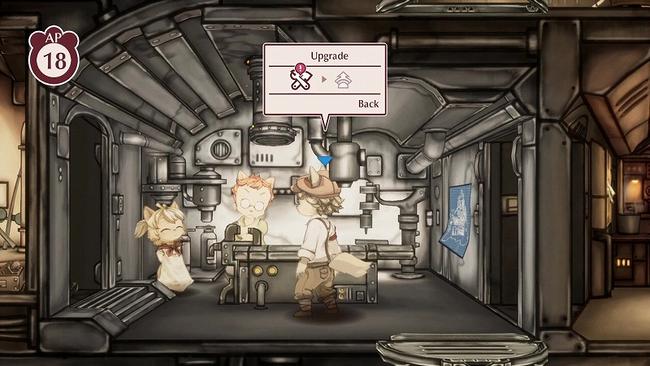
Intermissions happen 3 times per chapter: at the very start, around the middle, and right before the boss. These moments are when you’re afforded a chance to lick your wounds, apply some upgrades, gather some buffs, and more – but there’s only a limited amount of Action Points for you to spend. You’ll have to decide what’s most important at the current moment, and what might wait for later. Do you use up some of your supplies now for buffs from meals, or do you gather some scrap with Scrap Fishing? Do you use the farm; if so, what do you try and cultivate? Or how about just talking with characters, to increase their bond?
I don’t think it would be an exaggeration to say that it’s the Intermissions that Fuga’s entire gameplay loop is designed around. After all, the whole reason for tackling tougher routes through a chapter is to get more rare materials for upgrades. The catch, of course, is that if you’re too greedy – even if you might survive an encounter – any units that are injured or knocked out become an instant liability, which you’ll be forced to spend Action Points to recover during the Intermission. Points that could’ve otherwise gone towards buffs, upgrades, or gathering additional materials.
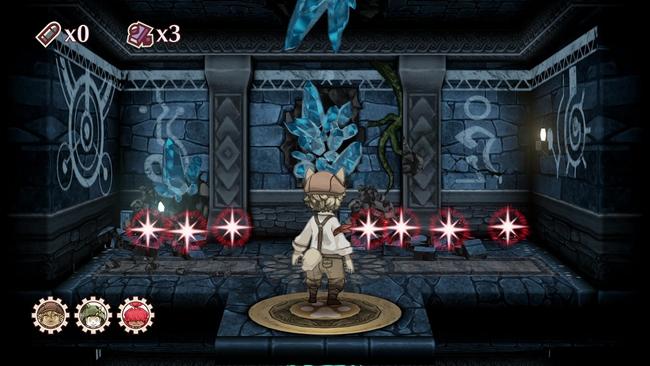
Thankfully for indecisive players, the game does lend some direction for these segments – every time an Intermission starts, you will be treated to a note listing something that each child “wants to do” during the recess. It can be anything, from expanding facilities, to exploring ruins, cooking or eating a specific meal, and more. Crucially, clearing this checklist is highly encouraged – as any child that has had their desire met during an Intermission’s mood will increase, allowing the ability for them to enter Hero Mode during the next section of the chapter.
Hero Mode and Link Attacks are two of the most powerful tools in your kit, and can absolutely save you in a pinch, assuming that you bother to foster their growth. As two units fight together, or talk with each other aboard the Taranis during Intermissions, their Bond Level will grow – and once you’ve reached a high enough level, you’ll be able to see a Link Event. After any pair has had their first Link Event conversation, they’ll gain access to the Link Meter in combat. Once it is filled, you’ll be able to let out an ultra-powerful attack that can decimate every unit on the field without expending SP.
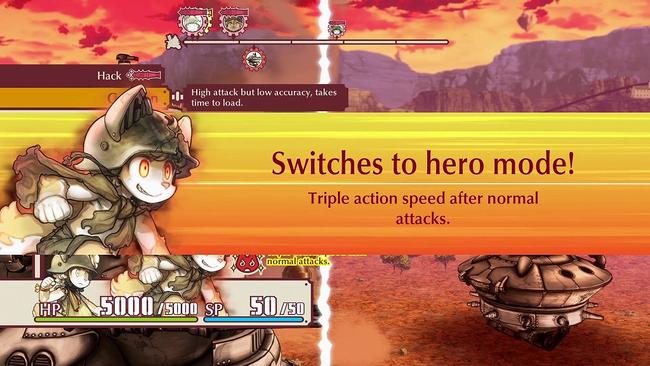
Any character that’s had their desire met during the latest Intermission will raise their Hero Meter over time, as they both deal and receive damage, and once they reach a fever pitch their eyes will begin to glow, and they’ll gain a buff. These can be anything from adding an additional hit to their normal attack, doubling skill damage, making it so that your normal attack will ignore armor as well as strip all armor from the unit in question, and more. Each child’s Hero Mode is wholly unique, and this adds another wrinkle to matters, where depending on your playstyle you might decide to ignore one child’s desires entirely.
Fuga’s battle system is undeniably a lot to take in, but it all comes down to the game’s one very clear philosophy – resource management. You’re constantly making decisions for which routes to take, which enemies to fight, by balancing out your desire for extra resources versus the dangers of spreading yourself too thin. You’ve got to have a game plan, and a plan for if things head south. You even see this at the end of each chapter, whenever you visit the remnants of a town before heading on the next leg of your journey. You can’t simply buy new use items or materials – you have to barter, giving up other items in exchange. Similarly during Ruin Explorations, a little side-activity where you dismount the Taranis to gather materials in a side-scrolling action segment, deciding when to use the Toy Bullets that you pick up along the way can determine how much treasure you’ll ultimately be able to salvage.

The logical conclusion to this chain of thought is the Soul Cannon. Only activating during certain engagements, players are given the option to sacrifice a child to feed the Taranis’ heart for an attack that’s guaranteed to wipe out the enemy. Naturally, you’ll want to avoid this at all costs – but if you find yourself in a situation where you’ve got no other choice, perhaps due to poor performance during a chapter, you might be forced to make that tough decision to proceed.
The gameplay loop is incredibly engaging, and the result is that you’re constantly planning your moves well in advance. Boss fights are challenging fun, almost always taxing your knowledge of the battle system, while rewarding you in kind if you’re duly prepared. Making your way through a tough situation without having your party members get injured is a thrill, and though I managed to build up my party to the point where the last few chapters weren’t nearly as taxing as the rest of the game, getting to that point was still a struggle.
Like all other entries in the Little Tail Bronx series and world, Fuga’s cast of characters is filled with anthropomorphized cats and dogs, called Felineko and Caninu’s respectively. If you’re at all familiar with “Kemono” culture, then you’ll understand what to expect here. If you’re not – well, they’re furries, just the Japanese sub-culture equivalent. CyberConnect2 has had a storied history with the Kemono community in Japan, including the Anthology Project where the company published around half a dozen volumes of a magazine dedicated to Kemono art. That community collaboration continues with Fuga, as the game is filled with examples of artwork contributed by members of the wider community. End Cards for each Chapter are drawn by a different artist, showing off the cast in a slightly different art style.
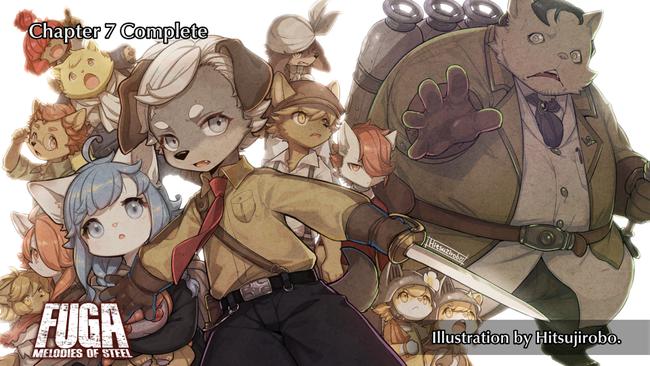
Fuga’s overall presentation is overflowing with charm. Whether it’s the swaying animations of the Taranis in motion, the detailed backdrops that shift and make way to new landmarks as you proceed across the environment, or the absolutely gorgeous soundtrack with a number of vocal themes by LieN – you’ll be hard-pressed to not find yourself overtaken by Fuga’s charms. Even the story, perhaps the game’s weakest point, still offers plenty to love all on its own. Reading the Berman Reports after each chapter gives some insight into how events directly tie into some of these children’s lives, the adorable comic book issues that get added to the library after each chapter are adorable, and Solatorobo fans in particular will have a lot to look forward to in the game’s later acts.
For me, Fuga: Melodies of Steel is the most “feel-good” release of the year so far. I always hoped it would be great, and my impressions of the game two years ago at AnimeExpo made me sure that the game was on the right track – but you’ll never truly know how a game will land until you’ve had a chance to sit down and play the whole thing for yourself. I can only hope that Fuga is the start of a grand new chapter in CyberConnect2’s journey as a developer, as their team has showcased some serious chops when it comes to designing an RPG.